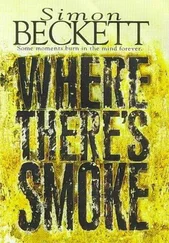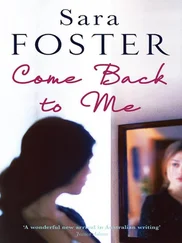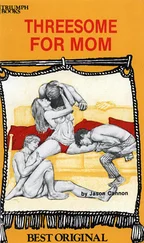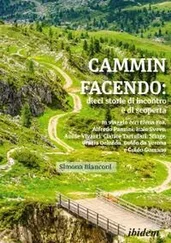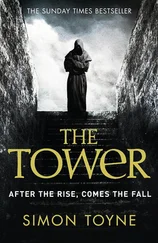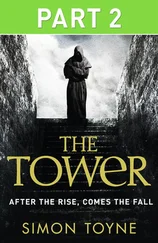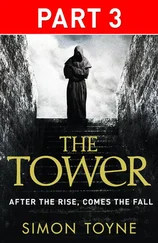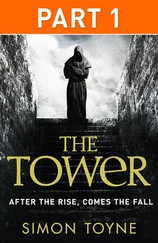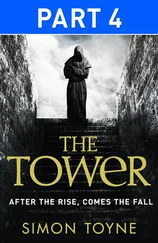Simon Foster - CHINA's Three Gorges & Xi'an
Здесь есть возможность читать онлайн «Simon Foster - CHINA's Three Gorges & Xi'an» весь текст электронной книги совершенно бесплатно (целиком полную версию без сокращений). В некоторых случаях можно слушать аудио, скачать через торрент в формате fb2 и присутствует краткое содержание. Год выпуска: 2010, Издательство: Hunter, Жанр: Старинная литература, на английском языке. Описание произведения, (предисловие) а так же отзывы посетителей доступны на портале библиотеки ЛибКат.
- Название:CHINA's Three Gorges & Xi'an
- Автор:
- Издательство:Hunter
- Жанр:
- Год:2010
- ISBN:нет данных
- Рейтинг книги:4 / 5. Голосов: 1
-
Избранное:Добавить в избранное
- Отзывы:
-
Ваша оценка:
- 80
- 1
- 2
- 3
- 4
- 5
CHINA's Three Gorges & Xi'an: краткое содержание, описание и аннотация
Предлагаем к чтению аннотацию, описание, краткое содержание или предисловие (зависит от того, что написал сам автор книги «CHINA's Three Gorges & Xi'an»). Если вы не нашли необходимую информацию о книге — напишите в комментариях, мы постараемся отыскать её.
CHINA's Three Gorges & Xi'an — читать онлайн бесплатно полную книгу (весь текст) целиком
Ниже представлен текст книги, разбитый по страницам. Система сохранения места последней прочитанной страницы, позволяет с удобством читать онлайн бесплатно книгу «CHINA's Three Gorges & Xi'an», без необходимости каждый раз заново искать на чём Вы остановились. Поставьте закладку, и сможете в любой момент перейти на страницу, на которой закончили чтение.
Интервал:
Закладка:
Kung Fu Flicks
While they are often disregarded by serious critics, martial arts movies have been important in the development of China's movie industry and are the only genre to have successfully bridged the gap between East and West. Although modern Hollywood action blockbusters differ greatly from Chinese movies of old, many of their fight scenes are fresh from a kung fu flick.
Early Years
The Chinese had been making martial arts movies for decades before they reached the West. Hong Kong can be called the home of kung fu flicks and is still the third-biggest movie-producing region in the world after Hollywood and Bollywood. Many early movies focused on the legendary 19th-century master, Wong Fei-Hung, renowned for his sense of fair play. At this time storylines tended to be fairly formulaic and the heroes often did what their audiences were afraid to do – standing up for themselves and what they believed, in the face of tyrannical authority or the criminal underworld.
Although these early films were popular within China, the first kung fu movies to make it onto the world stage were led by Bruce Lee.
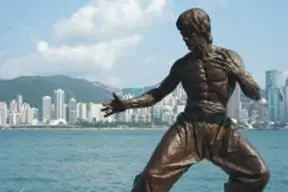
Bruce Lee statue in Hong Kong
Bruce Lee
As the man who popularized kung fu in the West, Bruce Lee, is rightly its most famous son. Known in China as Lee Xiaolong (Little Dragon), he was born in the US in1940but soon moved to Hong Kong. Although he had already appeared on screen by the tender age of five, Bruce didn't start learning kung fu under the wing-chun master, Yip Man, until he was 13 years old. A year later he took up cha cha dancing and won a Hong Kong competition in 1958. Aged 19, he returned to the States and in 1961 enrolled to study philosophy at the University of Washington. During this time he began teaching kung fu to fellow students, opened the Jun Fan Kung Fu Institute and met his future wife, Linda Emery. He was talent-spotted to win the role of Katoin the 1966 TV series The Green Hornet , albeit playing second fiddle to Van Williams. However, in spite of a few other bit parts, Bruce was unable to make a mark on audiences who weren't ready for an Asian movie star. After returning to Hong Kong in 1971, Golden Harvest's Raymond Chow offered him the starring role in The Big Boss , shot in Thailand, which was an instant box-office hit. He went on to star in Fist of Fury (1972), Way of the Dragon (1972) and the one that really brought the world spotlight, Hollywood-produced, Enter the Dragon (1973), although this wasn't released until after his death. An incomplete film project, Game of Death , was pieced together posthumously and, while not as polished as other productions (and featuring a double for much of the movie), the yellow jumpsuit worn by Bruce became a trademark, paid tribute to by Uma Thurman's costume in Quentin Tarantino's Kill Bill (2003).
Bruce Lee's sudden, unexpected death from a cerebral edema in July 1973 came as a shock to the movie and martial arts world. While 25,000 people attended his funeral in Hong Kong, many fans have, until recently, been disappointed at the paucity of Bruce Lee memorials or sights in the city. This has been remedied of late with a statue unveiled on the Avenue of Stars(see Hong Kong ).There continues to be speculation as to how he died and the equally early and tragic death of his son, Brandon Lee, while filming the 1993 movie The Crow , has only intensified this. What is certain is that during his short, explosive life Bruce Lee helped the arts of the East come to the West and his movies still bring enjoyment and inspiration to enthusiasts and moviemakers around the globe.
Comedy Kung Fu
After his early death, a string of copycat Bruce Lee's were peddled by Golden Harvest, but they failed to fill the void. Rather than try and imitate him a new group of stars chose to differentiate themselves by moving the genre into comedy. Of this group, Jackie Chan(aka Chen Long, meaning Dragon Chen) is the only one to have seriously broken onto the world scene. Like Bruce Lee, Jackie Chan initially had difficulty making it in Hollywood and it wasn't until he starred in Rumble in the Bronx (1995) that he found fame worldwide. Drawing inspiration from the likes of Buster Keaton and Harold Lloyd, Chen Long has combined his incredible kung fu ability with slapstick comedy to produce a string of mainstream hits, including Rush Hour (1998) and Shanghai Noon (2000). The development of kung fu comedy has continued with recent movies like Stephen Chow's Shaolin Soccer (2001) and Kung Fu Hustle (2004).
Hollywood Action, Hong Kong Kung Fu
Comedy aside, Hollywood has been strongly influenced by kung fu and martial arts are an almost obligatory part of modern action movies, often served with some direct Chinese input. John Woo's oblique camera angles and intense action scenes in movies like Face Off (1997) and Mission Impossible II (2000) have helped push him to the forefront of this international genre, while Yuen Woo-Pingis famous for his fight scene choreography, and made his name in the West with the Wachowski Brothers' Matrix trilogy (1999-2003), and more recently in Quentin Tarantino's Kill Bill two-parter (2003-4). Yuen Woo-Ping also played his part in Taiwanese Ang Lee's martial arts epic Crouching Tiger, Hidden Dragon (2000), which won four Oscars, and is widely regarded as the film that put China on the world movie map. While the film was criticized within China for pandering to the needs of Western audiences, it has undoubtedly ignited mainstream interest in the beauty of China's scenery and culture.
Traditional Chinese Medicine
Long scorned in the West as a mystical load of Oriental mumbo jumbo, Traditional Chinese Medicine (TCM) and healing are now enjoying popularity around the globe – a fact recognized by the WHO's acceptance of TCM (for certain ailments). However, it is also recognized that Western medicine is more effective for certain severe conditions, especially those requiring surgery, and many Chinese today use a combination of the two.
Intrinsically linked to the concept of qi , an energy force that moves along meridians around the body, TCM is based on attempting to balance the ever-shifting opposites of the human system. There are perceived to be five basic elements to the body (blood, energy, essence, moisture and spirit) and any misalignment of these or within the organs of the body is thought to engender poor health. Diagnosis often seems simplistic (checking the pulse by hand and examining the tongue are the usual first steps), but is aimed at identifying the imbalances that have lead to the illness. Thus, treatment is based on measures to counteract these differences, and offers a more holistic approach to health than Western medicine, which generally just treats the symptoms. TCM treatment comes in two principal forms, acupuncture(and acupressure/massage/reflexology) and herbal remedies. Massage is the most commonly utilized form of treatment and you will find establishments in every town across the country. Tuina (meaning push and grasp) is the official term for medicinal massage, while anmo is a more general term that also includes massage for pleasure rather than health benefits. Some methods of TCM treatment involve the use of both pressure and herbal remedies – moxibustion or hot-cupping uses heated bamboo or glass cups infused with herbs to draw qi to the required part of the body, but note that it will leave you covered in large reddish circular marks for a few days afterwards!
Читать дальшеИнтервал:
Закладка:
Похожие книги на «CHINA's Three Gorges & Xi'an»
Представляем Вашему вниманию похожие книги на «CHINA's Three Gorges & Xi'an» списком для выбора. Мы отобрали схожую по названию и смыслу литературу в надежде предоставить читателям больше вариантов отыскать новые, интересные, ещё непрочитанные произведения.
Обсуждение, отзывы о книге «CHINA's Three Gorges & Xi'an» и просто собственные мнения читателей. Оставьте ваши комментарии, напишите, что Вы думаете о произведении, его смысле или главных героях. Укажите что конкретно понравилось, а что нет, и почему Вы так считаете.

